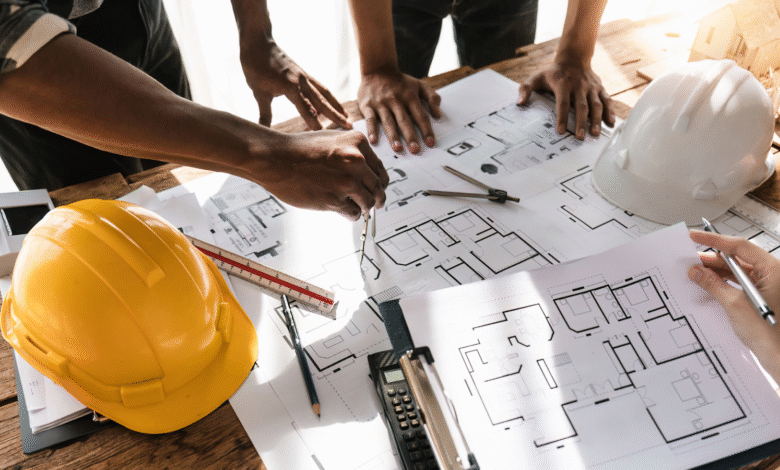How Structural Revit Modeling Improves Design Precision and Collaboration

In the rapidly evolving world of construction, Structural Revit Modeling has become a game-changer for improving design accuracy and streamlining collaboration. Using Building Information Modeling (BIM) software like Revit, engineers and designers now have the ability to create data-rich 3D models that enhance precision and communication between project teams. This approach helps ensure a more accurate, efficient, and cost-effective process from the planning stage through to construction.
This article delves into how Structural Revit Modeling is revolutionizing design workflows and enabling more effective collaboration, while minimizing errors, enhancing efficiency, and ultimately leading to superior project outcomes.
What is Structural Revit Modeling?
Structural Revit Modeling involves the use of Revit, a BIM tool, to create detailed, intelligent 3D models of structural components such as beams, columns, foundations, and other elements of a building’s framework. Unlike traditional 2D drafting methods, Revit allows engineers to design with data that automatically updates when changes are made, ensuring that all parts of the model stay synchronized throughout the entire process.
This integration of data and design helps eliminate the confusion of working with separate, uncoordinated drawings, making it easier to maintain consistency and reduce errors.
Improving Design Precision with Revit
Design precision is critical in construction, especially for structural engineers. Even small discrepancies can lead to major issues during construction. Fortunately, Structural Revit Modeling enhances design accuracy by using intelligent 3D modeling. By visualizing the entire structure in 3D, engineers can instantly spot potential issues and discrepancies, whether it’s an element’s size, placement, or interaction with other components.
Additionally, real-time updates to the model ensure that all parts of the design remain aligned. If, for example, a change in the design of a beam affects the column placement, Revit’s automatic updates will reflect this across all related views, such as floor plans and elevations. This level of precision helps reduce errors, streamline design, and ensure that all parts of the structure are correctly integrated.
Studies have shown that BIM, including Revit, can reduce design errors by up to 40%, thanks to its ability to detect conflicts and inconsistencies early in the design process.
How Revit Enhances Collaboration Across Teams
Collaboration is key to any construction project, especially when multiple teams like architects, engineers, contractors, and project managers need to coordinate their efforts. Structural Revit Modeling supports this collaboration by offering a shared, real-time digital environment. As team members make changes to the model, everyone working on the project gets updated instantly, ensuring that all parties have access to the most current version of the design.
A major challenge in traditional workflows is communication breakdowns, especially when team members are working from outdated drawings or designs. With Revit, everyone can access the same model and avoid misinterpretations or mistakes. This capability reduces the likelihood of misunderstandings, helping to streamline the project’s overall workflow.
Furthermore, Revit’s ability to enable concurrent work among different teams, with clear visibility of each team’s updates, ensures that any conflicts, like clashes between structural elements and MEP (Mechanical, Electrical, and Plumbing) systems, can be detected early and resolved before construction begins.
This approach also enhances cross-disciplinary collaboration. For instance, while a structural engineer might make updates to the core structure, architects can simultaneously adjust their designs to accommodate those changes. Similarly, contractors can use the model for accurate material takeoffs, reducing discrepancies between design and construction.
Streamlining Workflows and Reducing Errors
The traditional approach to construction often involves creating separate 2D drawings for each discipline, with the risk of inconsistencies between them. However, Structural Revit Modeling brings all disciplines into one collaborative model, updating and synchronizing everything automatically.
This integration not only saves time by eliminating the need to manually update multiple drawings but also significantly reduces the chances of errors creeping into the project. Research has shown that BIM can reduce rework due to design errors by up to 30%, contributing to both time and cost savings.
Moreover, Revit’s clash detection feature is invaluable. If a component in the design, like a duct system, conflicts with a structural beam or column, the software will immediately flag the issue, enabling the team to resolve it before construction begins. This proactive approach to problem-solving helps reduce errors that would otherwise be costly and time-consuming to fix on-site.
Enhancing Material Quantity Takeoffs and Cost Estimation
Accurate material quantity estimation is essential for both cost estimation and efficient project management. In traditional workflows, material takeoffs are often performed manually, which can lead to errors and delays. Structural Revit Modeling automates this process by generating precise material quantities directly from the model.
Revit’s ability to create accurate material takeoffs from the 3D model ensures that the quantities of materials are based on real-time data, eliminating the risk of overordering or underordering. This not only leads to more accurate cost estimates but also helps project managers plan material procurement and allocation more effectively.
Additionally, Revit supports better cost management by offering a more transparent view of the project’s material requirements, reducing the risk of unexpected cost overruns. Accurate material takeoffs help project teams avoid costly mistakes, like unnecessary material purchases, and allow for more efficient resource planning.
Supporting Sustainability in Design
Sustainability is increasingly important in today’s construction industry, and Structural Revit Modeling plays a key role in promoting energy efficiency and reducing environmental impact. With Revit, engineers can model and simulate a building’s performance in terms of energy usage, environmental load, and daylighting. This helps identify potential improvements early on.
For example, Revit’s energy analysis tools allow designers to see how different structural elements, such as insulation, window placement, and building orientation, can affect the energy efficiency of a structure. These insights enable engineers to make design changes that will have a lasting positive impact on energy consumption and sustainability.
Studies suggest that implementing BIM tools like Revit can lead to a 10-20% reduction in energy costs, making it easier to incorporate sustainable practices into the design process.
Conclusion
In conclusion, Structural Revit Modeling is revolutionizing the construction industry by enhancing design precision, improving collaboration, and reducing costly errors. As Revit integrates structural data into a shared 3D model, it enables teams to detect issues early, streamline workflows, and ensure that every detail is accounted for throughout the project lifecycle.
From more accurate material takeoffs to better sustainability outcomes, the benefits of Revit Modeling are undeniable. As the industry continues to embrace BIM technologies, those who adopt Structural Revit Modeling will be better positioned to deliver high-quality, cost-effective, and sustainable buildings.




